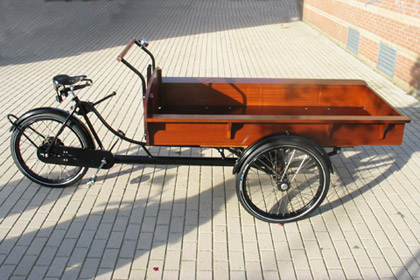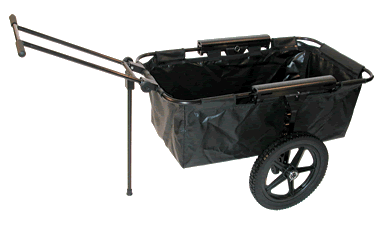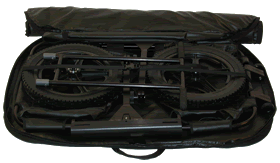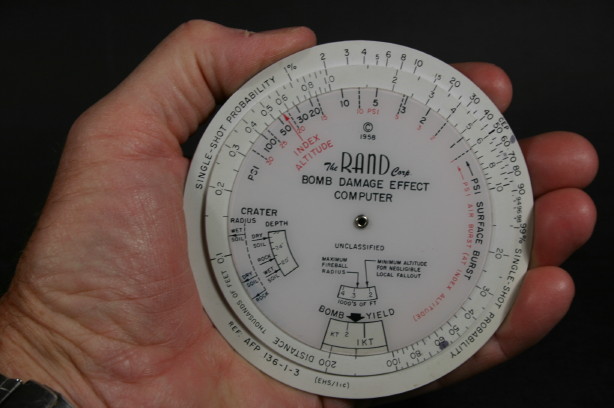James Glanz had yet another excellent piece in Thursday’s Times about the Iraqi electrical grid. Glanz – by himself and with co-authors – has been keeping an eye on the Iraqi electrcal power situation. We assume that if he’s doing any reporting or writing afer the sun sets, the Times has gotten him a generator. a Or at least a lot of flashlight batteries.
If I understand this correctly, this report started as coverage of a press
“briefing … intended, in part, to highlight successes in the American-financed reconstruction program here.
But it took an unexpected turn when [Karim] Wahid [the Iraqi electricity minister], a highly respected technocrat and longtime ministry official, began taking questions from Arab and Western journalists.
Because of the lack of functioning dispatch centers, Mr. Wahid said, ministry officials have been trying to control the flow of electricity from huge power plants in the south, north and west by calling local officials there and ordering them to physically flip switches.
But the officials refuse to follow those orders when the armed groups threaten their lives, he said, and the often isolated stations are abandoned at night and easily manipulated by whatever group controls the area.
This kind of manipulation can cause the entire system to collapse and bring nationwide blackouts, sometimes seriously damaging the generating plants that the United States has paid millions of dollars to repair.
Such a collapse took place just last week, the State Department reported in a recent assessment, which said the provinces’ failure to share electricity resulted in a “massive loss of power” on Aug. 14 at 5 p.m.
It added that “all Baghdad generation and 60 percent of national generation was temporarily lost.” By midnight, half the lost power had been restored, the report said.
With summer temperatures routinely exceeding 110 degrees, and demand soaring for air-conditioners and refrigerators, those blackouts deeply undermine an Iraqi government whose popular support is already weak.
In some cases, Mr. Wahid and other Iraqi officials say, insurgents cut power to the capital as part of their effort to topple the government.
But the officials said it was clear that in other cases, local militias, gangs and even some provincial military and civilian officials held on to the power simply to help their own areas.
With the manual switching system in place, there is little that the central government can do about it, Mr. Wahid said.
“We are working in this primitive way for controlling and distributing electricity,” he said.
Mr. Wahid said the country’s power plants were not designed to supply electricity to specific cities or provinces. “We have a national grid,” he said.
He cited Mosul and Baquba, in the north, and Basra, in the south, as being among the cities refusing to route electricity elsewhere. “This greatly influenced the distribution of power throughout Iraq,” Mr. Wahid complained.
At times the hoarding of power provides cities around power plants with 24 hours of uninterrupted electricity, a luxury that is unheard of in Baghdad, where residents say they generally get two to six hours of power a day.
Mr. Wahid said Baghdad was suffering mainly because the provinces were holding onto the electricity, but he said shortages of fuel and insurgents’ strikes on gas and oil pipelines also contributed to the anemic output in the capital.
Although a refusal by provincial governments to provide their full quotas to Baghdad could easily be seen as greedy when electricity is in such short supply, many citizens near the power plants regard the new reality as only fair; under Saddam Hussein, the capital enjoyed nearly 24 hours a day of power at the expense of the provinces that are now flush with electricity.
Keeping electricity for the provinces, said Mohammed al-Abbasi, a journalist in Hilla, in the south, “is a reaction against the capital, Baghdad, as power was provided to it without any cuts during the dictator’s reign.”
– snip –
The precision with which militias control electricity in the provinces became apparent in Basra on May 25 when Moktada al-Sadr’s Mahdi Army carried out a sustained attack against a small British-Iraqi base in the city center, and turned that control to tactical military advantage.
“The lights in the city were going on and off all over,” said Cpl. Daniel Jennings, 26, one of the British defenders who fought off the attack.
“They were really controlling the whole area, turning the lights on and off at will. They would shut down one area of the city, turn it dark, attack us from there, and then switch off another one and come at us from that direction.
“What they did was very well planned.”
Glanz and Stephen Carroll leave the punchline for last:
The electricity briefing began with Brig. Gen. Michael J. Walsh, commanding general of the Gulf Region Division of the Army Corps of Engineers, saying the United States had finished more than 80 percent of the projects it planned for rehabilitating the Iraqi grid.
There’s always a risk with trying to stay on message – “80 percent completion” – when everyone in the room knows the assertion is essentially false.
This seems an appropriate moment to remind ourselves of the Naval War College’s “Solar Eagle” proposal for Iraq:
The proposal was, essentially, to put a PV panel on every Iraqi roof. A copy of the report is available from The Project on Government Secrecy
at the Federation of American Scientists. . The Navy “Solar Eagle” proposal is for a decentralized system. Decentralization and redundant connections are what make networks robust and resistant to attack – and reduce the need for transmission capacity, making the grid at least marginally more efficient. But – even one severed the connections between every house and the grid, each house would still be able to produce some power locally. Even without storage – probably enough to keep food from spoiling and run some fans during the hottest part of the day.
Restoring the power grid as much as possible would seem to be a critical step towards building civil society in Iraq; because of the violence, diesel fuel delivered to troops in the field – to power generators – has been estimated to cost over $300 per gallon. [See details in Noah Schachtman’s excellent coverage of defense procurement issues, such as Iraq’s Long, Winding Supply Lines , in the DangerRoom blog at wired.com, reporting that field commanders in Iraq had “urgently” requested solar and wind generators to protect military installations, and limit the amount of time their troops would be exposed to attack while escorting fuel convoys.
It’s hard to avoid the inference that a large-scale solar project in Iraq would be likely to have the followi
ng effects:
- limit the effects of violent political factions, making solar power look like one of our more successful strategies in Iraq;
- To the extent that we went to war in Ira for oil – a successful solar program wouldn’t be good news for proponents of the war, as it would seem to undercut the immense value of Iraq’s oil fields;
- After an initial spike in prices, economies of scale might substantially reduce prices for photovoltaic (and wind-powered) systems worldwide.
In other words, unpalatable to our political leadership, despite the “urgent” requests of our military commanders in the field.
But perhaps it’s worth asking ourselves – why nor – if we’re already talking about “exit strategies” – think of implementing Solar Eagle right now.
background resources
Several chapters of Paul Baran’s work at the RAND corporation, “On Distributed Communications,” which I understand to be the earliest articulation of the notion that redundant networks could be self-repairing and therefore highly resistant to attack, are available on the RAND website as Acrobat documents. Link to a list of available publications; and here’s a short bio from RAND:
An electrical engineer by training, Paul Baran worked for Hughes Aircraft Company’s systems group before joining RAND in 1959. While working at RAND on a scheme for U.S. telecommunications infrastructure to survive a “first strike,” Baran conceived of the Internet and digital packet switching, the Internet’s underlying data communications technology. His concepts are still employed today; just the terms are different. His seminal work first appeared in a series of RAND studies published between 1960 and 1962 and then finally in the tome “On Distributed Communications,” published in 1964.
Since the early 1970s as an entrepreneur and private investor, Baran has founded or co-founded several high-tech telecommunications firms. He is currently chairman and co-founder of Com21, Inc., a Silicon Valley-based manufacturer of cable TV modems for high-speed, high-bandwidth Internet access. He is also a co-founder of the Institute for the Future. Baran holds several patents and has received numerous professional honors including an honorary doctorate from his alma mater Drexel University (BS ’49). He has a master’s degree in engineering from UCLA.
An excellent article – really a “must-read” for people who care about these issues – and to make sense of what Irwin Redlener has called “the immense mass of interlocking details” is “Expecting the Unexpected: The Need for a Networked Terrorism and Disaster Response Strategy,” by W. David Stephenson and Eric Bonabeau, in the on-line journal Homeland Security Affairs.






